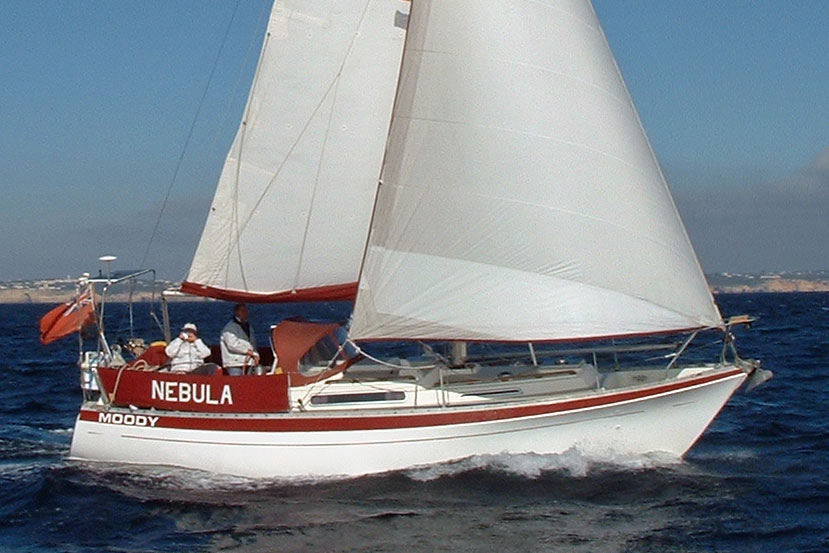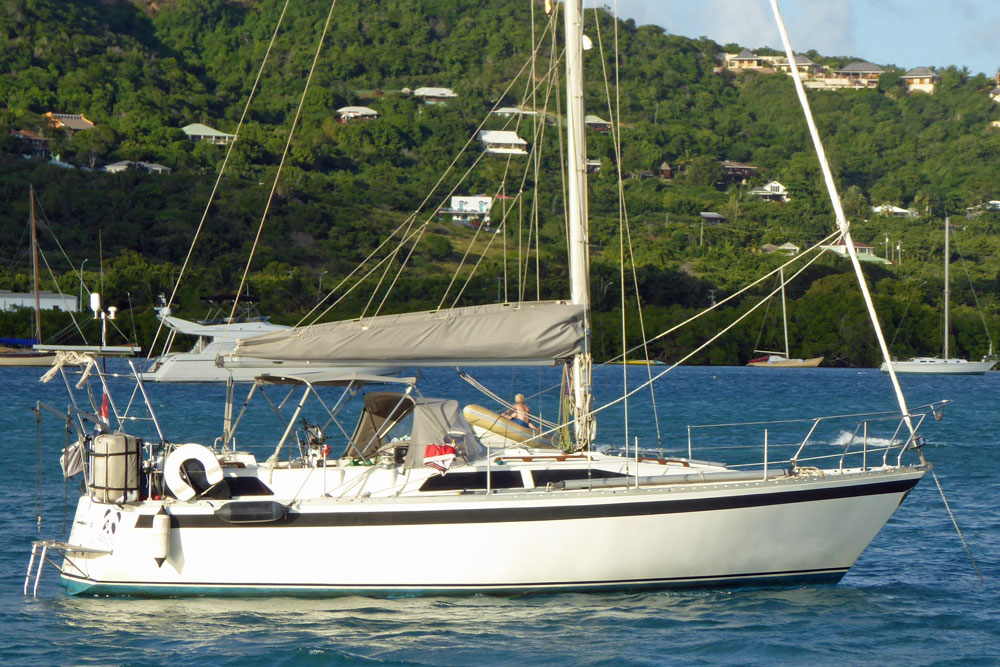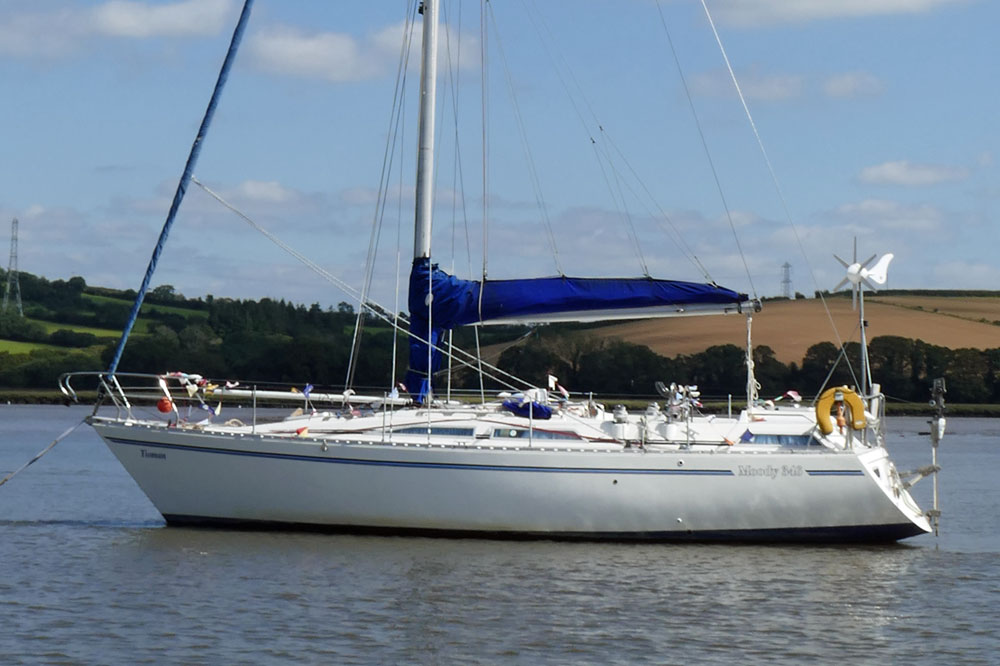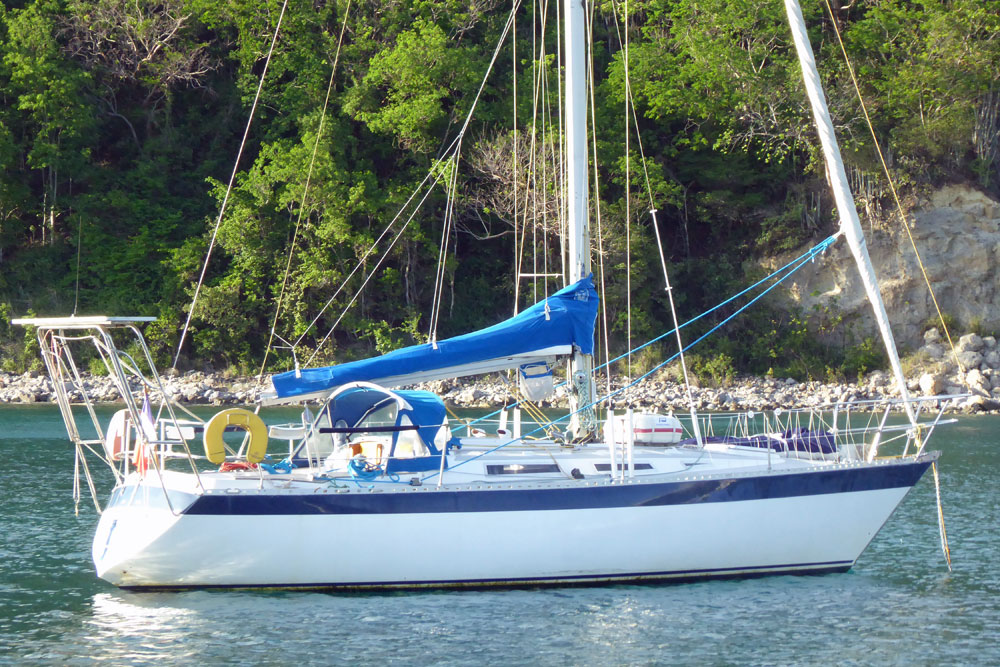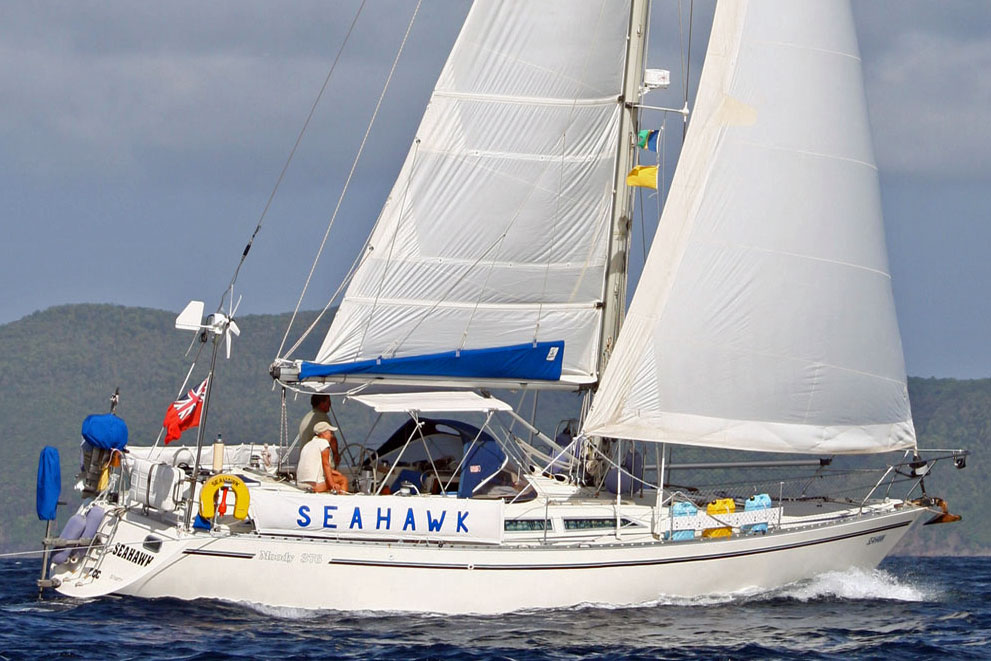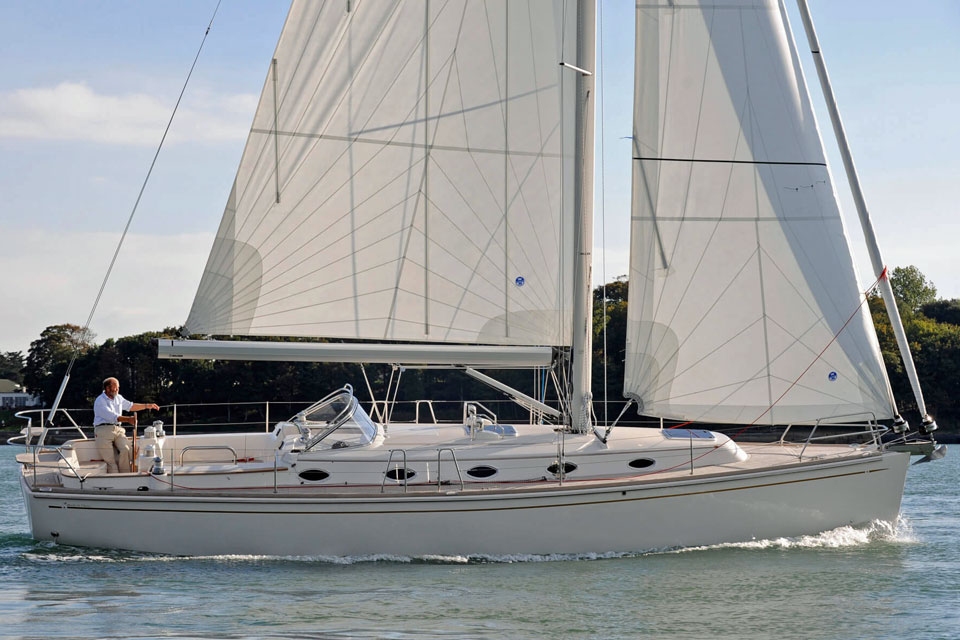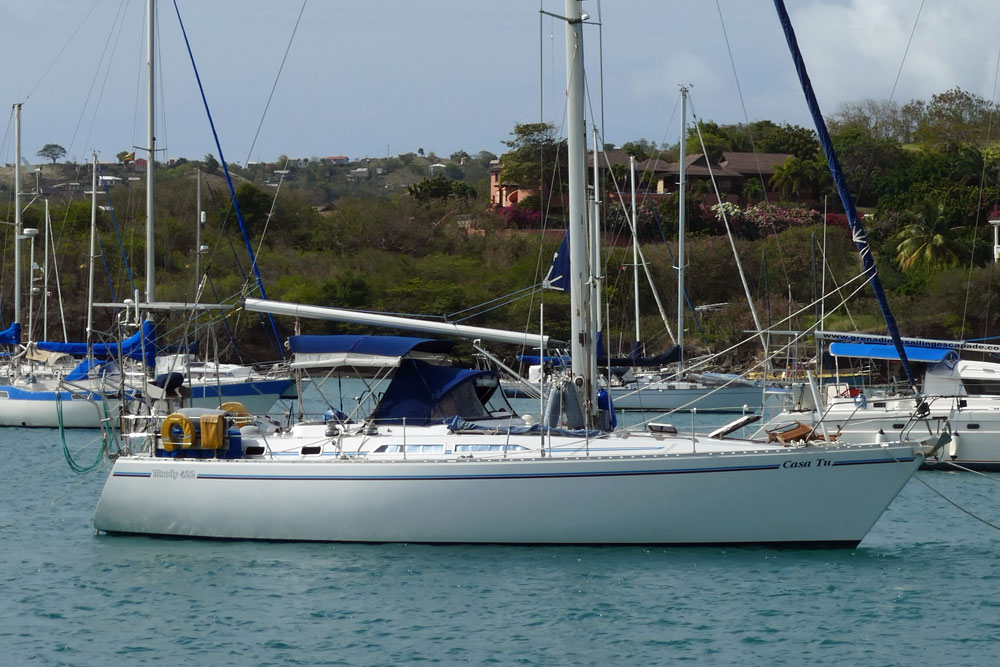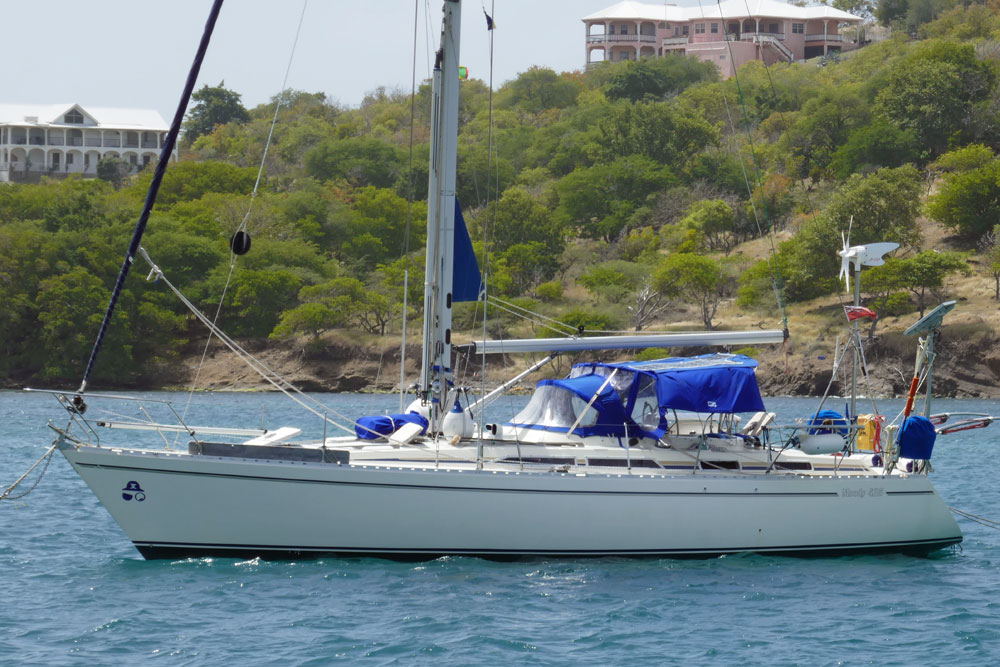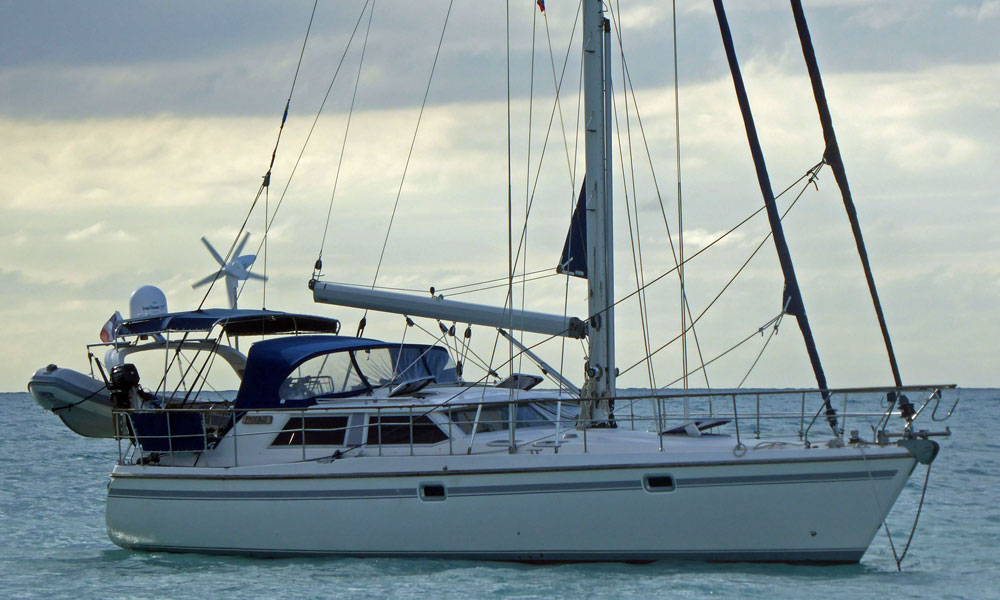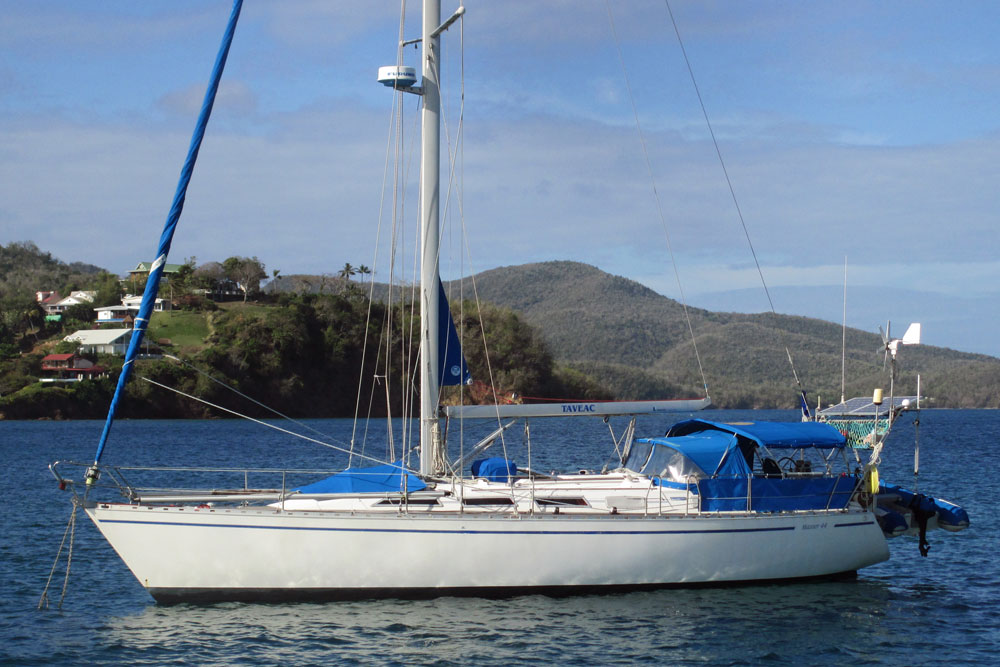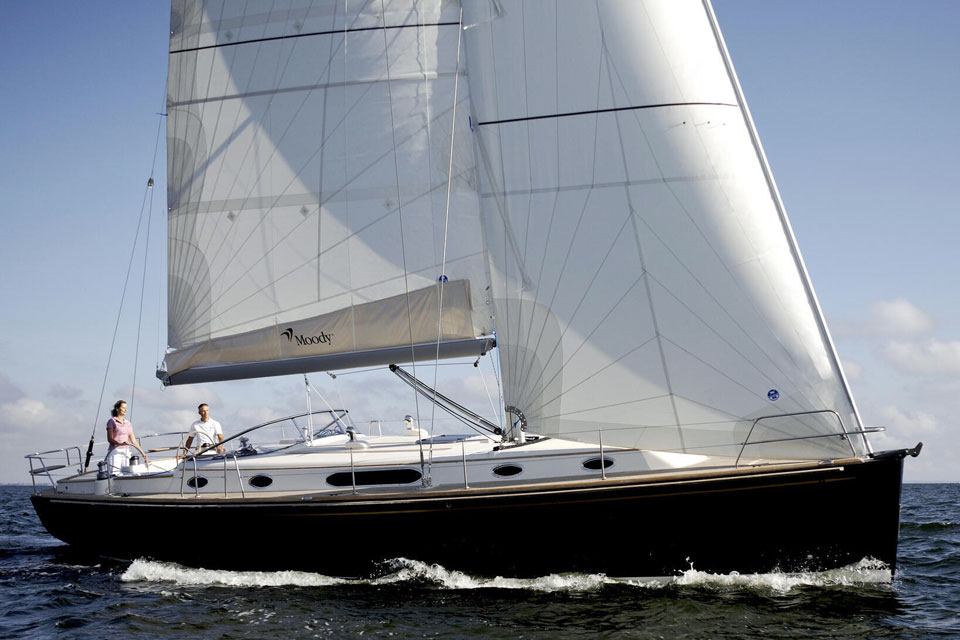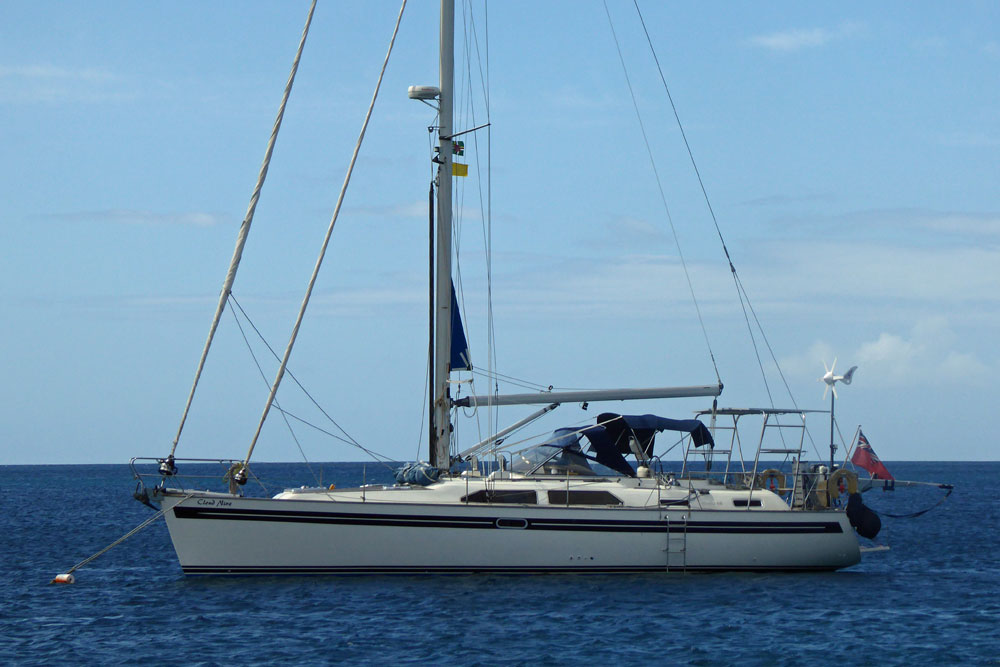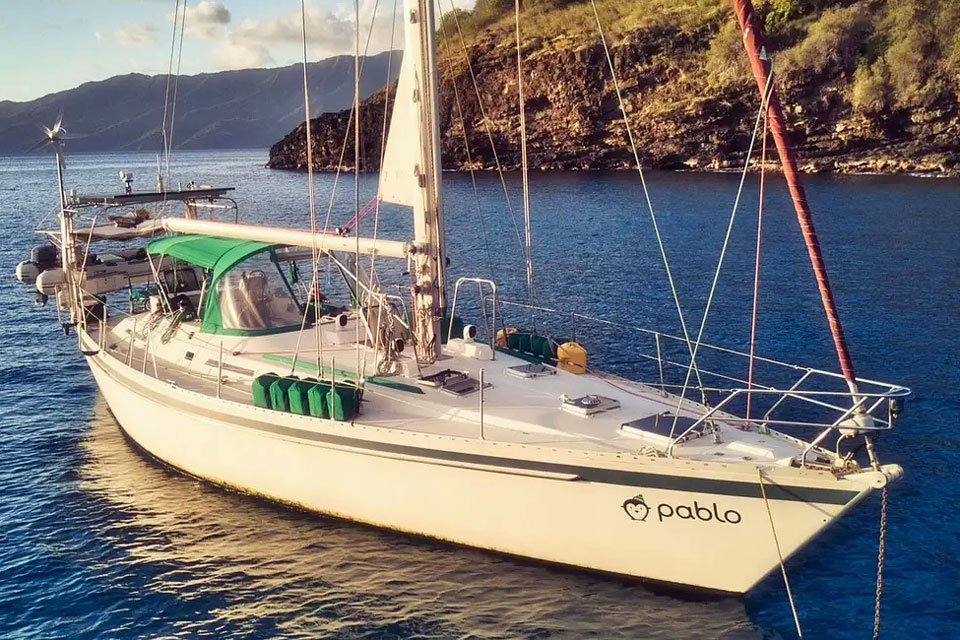- Home
- Sailboats 50'-55'
- Moody 54 Sailboat
The Moody 54 Sailboat
Specs & Key Performance Indicators
The Moody 54 sailboat, a light-displacement centre-cockpit cutter, was designed by British naval architect Bill Dixon and constructed by A. H. Moody & Son Ltd in the UK.
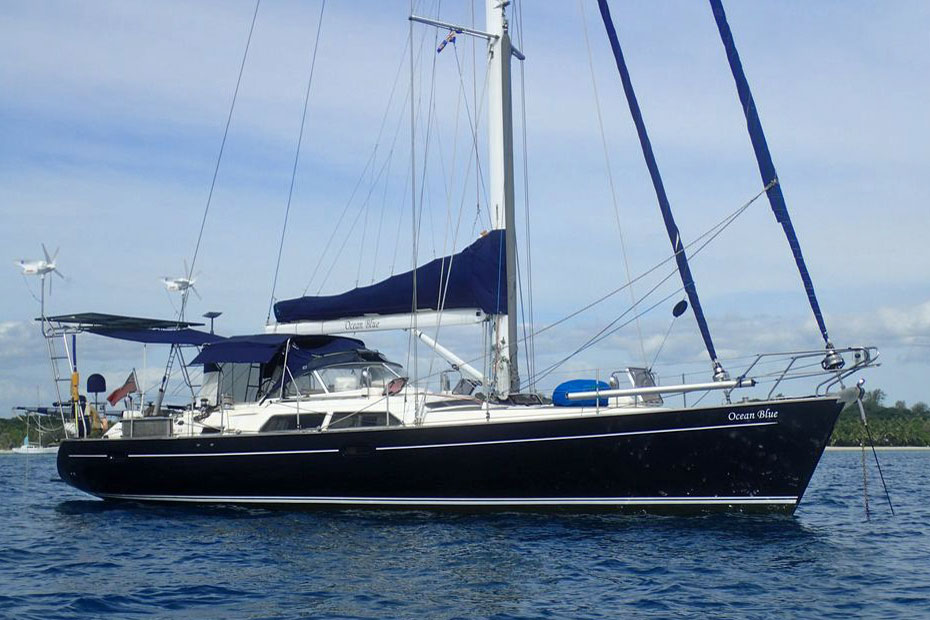 The Moody 54 Cutter
The Moody 54 CutterThe Moody 54 cutter should not be confused with the Moody 54DS which, although also designed by Bill Dixon, shares few similarities with the cutter and was a much later boat, first built in 2012.
Published Specification for the Moody 54 Sailboat
Keel & Rudder Configuration: Fin keel with spade rudder*
Hull Material: GRP (Glass Reinforced Plastic)
Length Overall: 16.54m (54'2")
Waterline Length: 14.40m (47'3")
Beam: 4.85m (15'11")
Draft: 2.37m (7'9")**
Rig Type: Cutter rig
Displacement: 21,500kg (47,400lb)
Ballast: 8,600kg (18,960lb)
Designer: Bill Dixon
Builder: Moody Yachts
Year First Built: 2000
Year Last Built: 2006
Number Built: Approximately 44
* Not a normal spade rudder. This one is partially balanced on a short skeg.
** A shallow draft version was also produced drawing 1.8m (5'11")
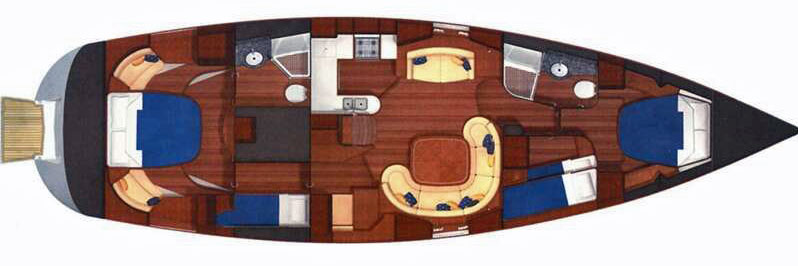 Moody 54 Accommodation Layout
Moody 54 Accommodation LayoutDesign Ratios: The Key Performance Indicators
- Sail Area/Displacement Ratio (16.6): At 16.6, the Sail Area/Displacement Ratio falls in the range of reasonably good performance, meaning the boat is neither underpowered nor exceptionally high performance. It should be capable of efficient sailing with a good balance between power and weight.
- Ballast/Displacement Ratio (33.9): A Ballast/Displacement Ratio of 33.9 indicates that the boat's stiffness is moderate. While it does not reach the threshold of 40 for a stiffer and more powerful boat, it's still reasonably stable. However, this metric doesn’t account for the actual placement of the ballast. If the ballast is low in the keel, the boat may still have good stiffness, but if it is distributed higher, the boat might be less stable.***
- Displacement/Length Ratio (201): A ratio of 201 places the Moody 54 in the category of a moderately displaced boat. This suggests a balance between strength and performance, where the boat is neither too light to be unstable in heavy seas nor too heavy to be slow in moderate conditions.
- ****Comfort Ratio (35.3): At 35.3, the Comfort Ratio indicates medium-high comfort, typical of a moderate bluewater cruising boat. This suggests that the Moody 54 should provide a relatively comfortable ride in varied sea conditions, suitable for long voyages but retaining some agility.
- Capsize Screening Formula (1.8): With a value of 1.8, the Moody 54 is well within the threshold of 2.0, suggesting favourable characteristics for blue water sailing. This implies that the boat has a reduced risk of capsizing and is suitable for ocean passages.
The Theoretical Nature and Limitations of the Design Ratios
While the design ratios offer useful insights, they do have limitations in terms of practical application:
- *** Ballast/Displacement Ratio: This ratio doesn’t account for the placement of the ballast. A keel with a lower centre of gravity (e.g., a bulb fin keel) will provide better stability than a shallow draft keel with poorly positioned ballast. Hence, two boats with the same Ballast/Displacement Ratio can exhibit different stiffness characteristics.
- **** Comfort Ratio: Ted Brewer's Comfort Ratio favours heavier displacement and narrow beam designs, often with long overhangs. While this might have been ideal for traditional bluewater cruisers of years gone by, modern light-displacement boats with wider beams and plumb bows can also be comfortable and capable. These modern designs might score poorly using Brewer’s method, yet still offer excellent performance and comfort due to advancements in hull design and materials.
In conclusion, while these ratios provide a theoretical framework to assess the Moody 54's performance, stability, comfort, and bluewater capability, they must be interpreted with an understanding of their inherent limitations. Modern design innovations often transcend these traditional metrics, offering boats that perform and comport exceptionally well despite not adhering strictly to older paradigms.
Read more about these all-important design ratios...
What the Yachting Press had to say about the Moody 54
Writing for Sailing Magazine, the celebrated yacht designer Robert H Perry tells us:
"Here's a nice big cruising boat designed by Bill Dixon for Moody. The drawings show a rig with in-the-mast furling so we can assume this design is aimed at carefree cruising. The D/L of this design is 201 and that's on the light side for a boat of this type. Beam is moderate. Overhang forward is fashionably short. There are two keels offered, one with a 7-foot, 6-inch draft and another shoal keel that draws 5 feet, 11 inches. The hull shape looks reasonable although I have no lines plan. The deck plan forward looks full to my eye and that would be consistent with other Dixon designs. I like fine entries. This design has an attractive, gentle spring to its sheerline."
This article was written with the assistance of Gemini, a large language model developed by Google. Gemini was used to gather information, summarize research findings, and provide suggestions for the content and structure of the article.
Other sailboats in the Moody range include:
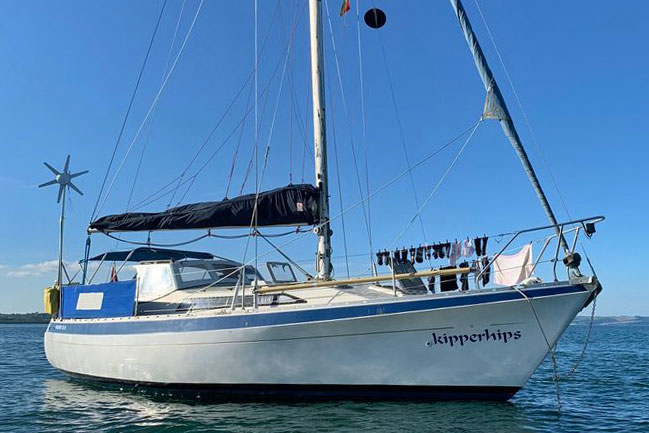 The Moody 33S
The Moody 33SRecent Articles
-
Sailboat Wheel Steering Maintenance & Inspection Checklist
Dec 30, 25 02:32 PM
Keep your vessel’s helm responsive and reliable with our expert maintenance checklist. Master cable tensioning and system inspections to avoid mid-passage failures. -
Modern Boat Electronics and the Latest Marine Instruments
Dec 20, 25 05:27 PM
Should sailboat instruments be linked to the latest boat electronics as a fully integrated system, or is it best to leave them as independent units? -
Hans Christian 43: Classic Bluewater Cruiser & Liveaboard Sailboat
Dec 10, 25 04:37 AM
Explore the Hans Christian 43: a legendary heavy-displacement, long-keel sailboat. Read our in-depth review of its specs, design ratios, and suitability for offshore cruising and living aboard.
